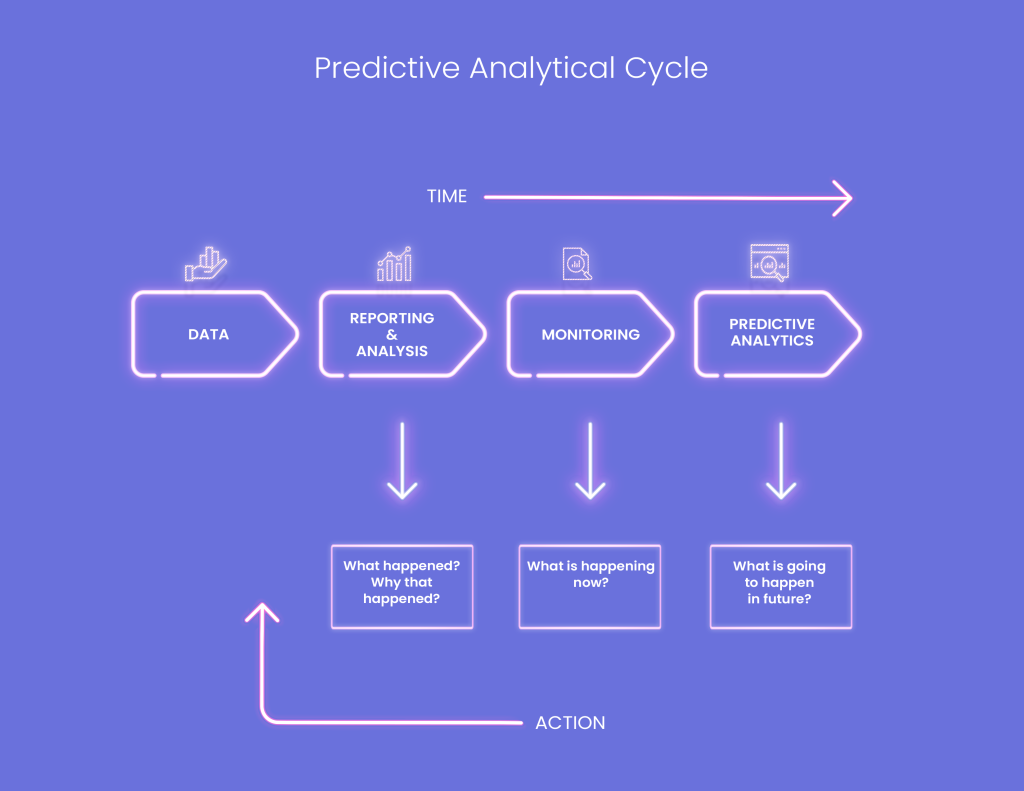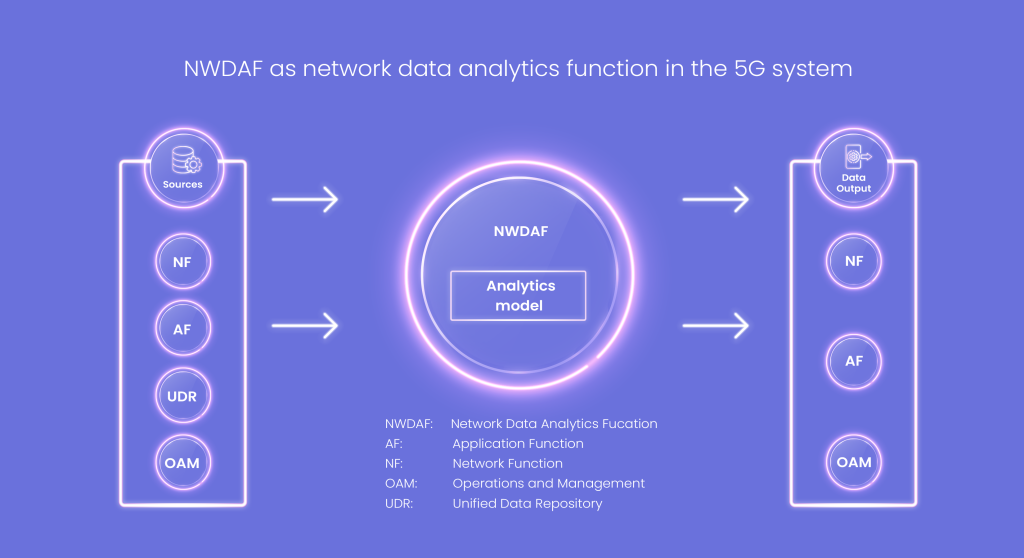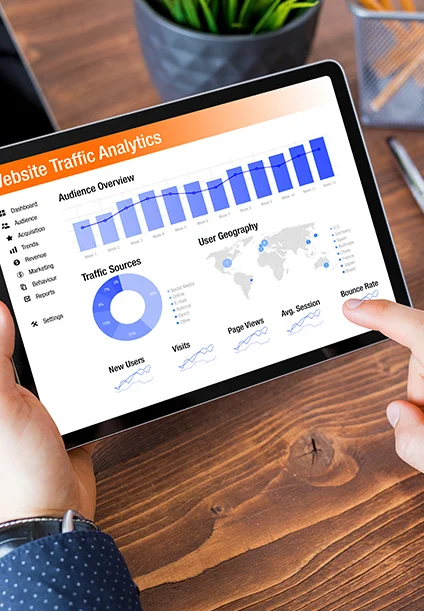Predictive Analytics: Avant-grade for 5G communication landscape
September 09, 2022
The discussion around the revolutionary benefits of the 5th generation (5G) network is nothing new now. 5G mobile network isn’t just about browsing and texting; it can also support multiple bandwidth-demanding devices such as smartphones, smartwatches, security cameras, AI/ML, self-driving cars, health sensors, and added support for AR/VR.
As the network operators utilize the data extensively, the case of 5G is somewhat more demanding due to its data generation capability. Its support for devices results in a profound quantity of data. Mobile network operators (MNOs) have to integrate advanced tools to process this unprecedented amount of data growth.
Fortunately, Predictive Analytics can fill the gap! The ability of predictive analytics to process big data is crucial for successful operations. Let’s explore in detail how predictive analytics solutions are building blocks for effective data utilization and helpful in delivering seamless customer experience in the 5th-generation communication landscape.
Demystifying predictive analytics
In recent years, predictive analytics has attracted much attention due to its viable capacity to support big data processing. Businesses from diverse verticals are now utilizing predictive solutions. These solutions work on linear and nonlinear regression, support vector machines (supervised learning models), neural networks, and decision tree models.
Predictive analytics utilizes historical and new data to forecast expected activity, behaviour, and trends. That includes applying statistical analysis, analytical queries, and machine learning models to predict values for the future.

Figure 1: A brief overview predictive analytics cycle
The findings provide channel partners with an in-depth insight into user preferences, allowing them to detect anomalies and possible possibilities. By 2022, It is also projected that the global predictive analytics market will be worth $10.95 billion and $35.45 billion by 2027.
The intersection of 5G and predictive analytics
As more data resides across transactional databases, sensors, equipment, etc., MNOs are now swimming in data. To give a meaning to this data, data scientists use machine learning and deep learning algorithms to find patterns and predict future events.
A 5G cell, which transmits and receives mobile data, supports speeds of at least 20 Gb/s for downloads and 10 Gb/s for uploads, with latency as low as 4 ms or more.
Predictive analytics delivers advanced business intelligence, which is further supported by the integrated analytical systems of the 5th-generation network.
A predictive analytics network enables service MNOs to:
- Maintain Quality of Services (QoS), Service Level Agreements (SLA), and Quality of Experience (QoE)
- Maintain Quality of Services (QoS) and Service Level Agreements (SLA)
- Quality of Experience (QoE)
- Predict performance-related issues before they occur
- Minimize network disruption by lowering the downtime
- Maximize the return on network-capacity
- Support continuous tuning of the network
The crucial Network Data Analytics Function (NWDAF) in 5G networks
The Network Data Analytics Function (NWDAF) and Network Exposure Function (NEF) are built-in centralized platforms for analytical operations in the 5G architecture. When coupled with the in-built NWDAF and NEF, the predictive analytics tools will deliver unmatchable insights on performance measurements, customer behaviour, auto-detecting anomalies and indications of any future degradations.

Figure 2: The architecture of NWDAF in the 5G system
The ubiquitous architecture of 5G has its own separate NWDAF for each layer, made to manage the data of individual layers, including:
- Data management & orchestration
- Application function level
- User equipment/RAN
- Data network
Predictive analytics models can be installed on all these layers to reduce complexity. Data collected from these layers will deliver more in-depth information on the individual entity.
Read our whitepaper: The promise of advanced connectivity by 5G
Data-driven benefits unveiled by predictive analytics
Businesses looking to leap forward their competition and scale while reducing risks can place their safest bets on predictive data analytics. Here are some of the promising data-driven benefits it holds:
Improved user experience
Network operators are adopting a proactive rather than a reactive approach, and seamless customer experience is a crucial source of differentiation for MNOs. Smooth network performance isn’t the only deciding factor, and an entirely new data-driven management approach is necessary.
The prodigious increase in data generated from 5G means a solid opportunity to deep dive into consumers’ behaviour across more comprehensive activities. As a result, accurate processing of big data will help MNOs adopt an agile approach for a seamless user experience.
Enhanced systems operations
Now, connectivity is an invaluable resource; hence the pressure on MNOs to deliver a seamless mobile network is more significant than ever. While the problems are inevitable, operators have to ensure uninterrupted services in any case.
That is where predictive analysis jumps in again. For the right solutions at the right time, data can be analyzed to find the answer to operational issues in real-time. With the predictive analytics method, MNOs can create an automated solution for network optimization and can ensure predictive maintenance on a network without human intervention. real-time
Intelligent automation
MNOs can gain real-time, application-level visibility into what is happening and understand the quality of experience users have by leveraging AI and ML algorithms. For example, streaming service degradation can be reviewed in real-time at the micro-segment level for customer impact reporting. Ultra-fast orchestration will accelerate problem solutions, resulting in reduced customer churn. Through predictive analysis, MNOs can perfectly position themselves to reap the benefits while serving their customers' needs.
To sum up
As the 5G rollout gains momentum, MNOs will be challenged to support their innovative capabilities while ensuring a seamless customer experience. The predictive analytical solutions should be integrated into the 5G core as a cloud-native function for real-time analytics and end-to-end troubleshooting capabilities to confront the issues.
It will provide operators with a unique capability to analyze large datasets, identify customer patterns, and make accurate predictions to improve overall network performance. All thanks to AI/ML algorithms, statistical analysis, and regression models.
A resilient and fully integrated solution will enable operators to take a closed-loop approach to assure a robust customer experience based on actionable insights.
Looking for top-tier predictive analytics solutions? Head over to our Data and AI services for more information, or contact us for advanced business intelligence solutions for your advanced business.
Quick Link
You may like
How can we help you?
Are you ready to push boundaries and explore new frontiers of innovation?


